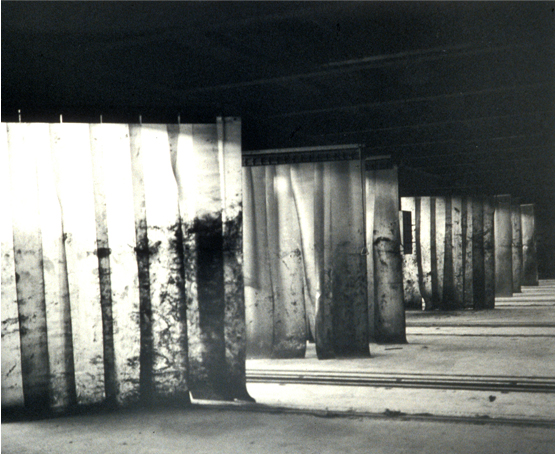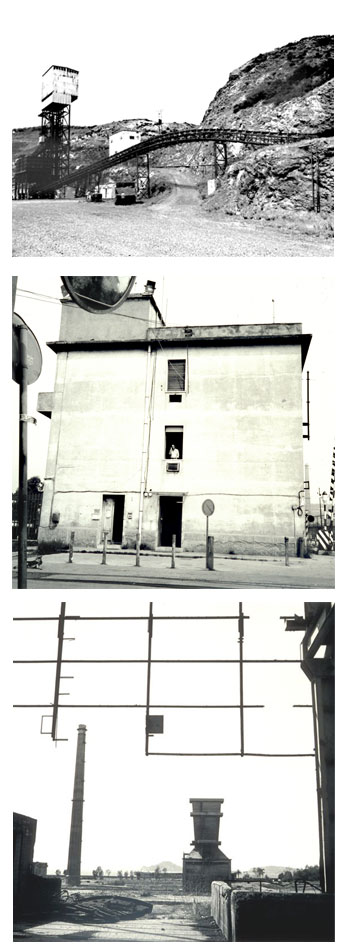
Ex-ILVA Steelworks
Bagnoli, Italy
The “decoding” of space by means of its associated time was still brought about by acts, by ceremonial – specifically, by the Greeks’ processions and “theories”. Being ritual, gestural and “unconscious” – but also real – decoding was part of the use of a space of this kind and of its image.
– Henri Lefebvre, The Production of Space
In 2000, collaborating with the planning department of the City of Naples, Italy, Fels spent nine months considering the role of art in the rehabilitation of a two thousand acre site on the Bay of Naples. For a century, until the mid-1990’s the complex had been Italy’s largest steel mill; when Fels was in residence, it had become Europe’s largest reclamation project. The site was an ancient spring that once attracted Roman emperors. Before becoming a steel mill it had been abandoned for several hundred years to malaria-infected mosquitoes. The land now contains (in equal measure) badly polluted ground water and magnificent recreational possibilities. Naples is the most densely populated of Europe’s cities and 2000 acres of waterfront open space represents unprecedented potential for the city. Fels was granted access to the entire site and worked alongside the team charged with restoring it.
The physical difficulties of restoring a vast and heavily polluted area were simple compared with the meta-physical issues of how the site could honor the ex-steelworks and the generations of steelworkers who had worked there. Fluent in Italian, Fels began interviewing people involved in the enormous project. He came to realize that the site’s history provided the greatest tool for making sense of what the place could become; art could best re-present that history in the new context.
Fels found himself in the role of translator – not between languages, but between times. The planners seemed well-versed in designing ways to make the land useable for recreation. They were far less prepared to re-introduce meaningful dialogue with the past, or in finding ways to have history speak to some yet determined future. The face of labor in the South of Italy had changed dramatically at Bagnoli, and Bagnoli had changed the way labor was seen throughout the South. Neopolitans have very strong attachment to what had gone on at the plant. Fels set out on a journey of discovery, researching places in the wider environment that would provide narratives clues for the mill.
He investigated the astounding ancient cultural and natural history of the area. His research took him into archives, city, administrative and corporate offices, to historic sites, imperial villas, the islands of Procida, Ischia and Elba (which supplied iron ore to the mill), out into the ex-steelmill grounds, to coffee bars, artist, writers and actors’ studios, even to the fabled lair of the Sibyl. Using centuries old technology, a steel mill is about material transformation involving mythical elements from the center of the earth. Though the plant was enormous, physically complex and fully mechanized, at base the transformation from iron ore to steel at Bagnoli was both magical and rather straightforward.
The energy to make the steel was harnessed in huge furnaces, which were always managed and attended by workers. Fels became fascinated by the way the mill transformed the workers and their families, who in turn changed the economy and social state of Bagnoli and Naples, one of Italy’s poorest cities. His fascination led to finding stories that could be re-introduced to the site. Water’s Edge: Looking for Art, a book length manuscript he wrote about the experience, is now being edited for publication. The site itself is still being prepared for its reincarnation as a tourist destination.


